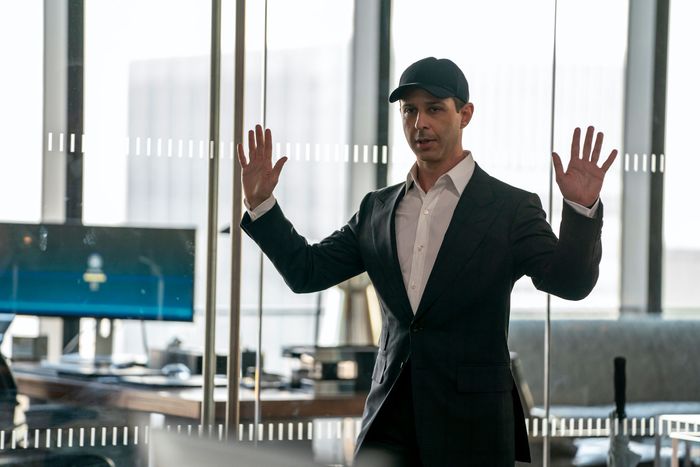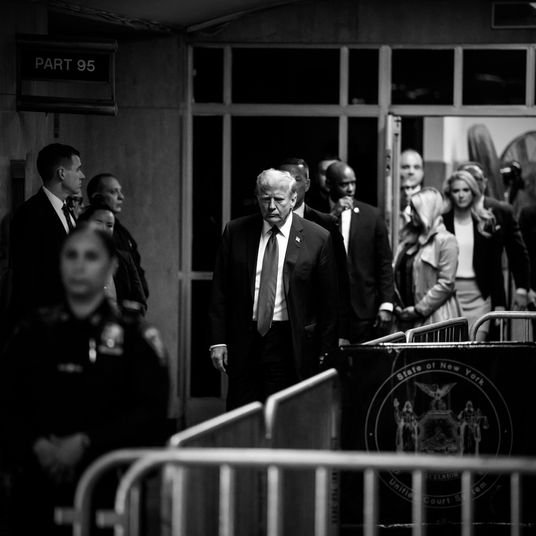
This article was featured in One Great Story, New York’s reading recommendation newsletter. Sign up here to get it nightly.
When the internet recently roasted Chamath Palihapitiya for likening himself to the “man in the arena” from Teddy Roosevelt’s famous 1910 speech, the Facebook exec turned venture capitalist trolled his critics with a rack of clothing.
“I’m in the arena trying stuff. Some will work, some won’t,” Palihapitiya posted just before Labor Day weekend on the website formerly known as Twitter alongside a rack of five cream-colored garment bags with burgundy trim — Loro Piana’s unmistakable signature color, which the brand calls “kummel.” The garments, hanging above five more shopping bags filled with shoe boxes and other accessories (perhaps ties or belts or silk and cashmere socks), easily cost upwards of $10,000 combined.
In other words, they were the opposite of what might be worn by “the man who is actually in the arena, whose face is marred by dust and sweat and blood,” according to Roosevelt’s speech — and that was the point. It was the equivalent of wearing your clothes with the tags on the outside. Palihapitiya, who on his podcast refers to people less successful than him as “mids” (including those who fly commercial), was quite literally trying on clothes mids could not afford, letting his critics know that whatever arena he was in now, he was, at the very least, winning. Those wealthy enough to identify Loro Piana’s coloring got the joke immediately: “The LP in LP,” replied Christian Garrett, a venture capitalist and former college-basketball star (that is, the limited partner — a term for an investor in venture funds — wearing Loro Piana).
The Italian fashion house, which next year will celebrate its 100th birthday, is known for its cashmere and fibers from elusive Andean vicuñas — wild, once-endangered animals that can be herded and sheared only once every two years — the most expensive wool on the planet. (Loro Piana’s vicuña jackets sell for upwards of $27,000.) And it has long been the epitome of an IYKYK (if-you-know-you-know) brand, one that — at least until recently — has eschewed any hint of marketing, existing in the kingdom of the wealthy as a status symbol so subtle that typically only those with the means to shop for the clothes would recognize it. That’s made it the quintessential “quiet luxury” or “stealth wealth” brand, allowing rich people — from a tradition of Goldman Sachs executives to Bill Gates — to look nice without broadcasting that they spent several months of your rent on their outfit. (After all, that’s what watches are for.)
Lately, though, it’s been a little less quiet — both on the part of those who wear the brand and from the brand itself. In mid-March, Loro Piana, which was acquired by LVMH a decade ago, opened a store in Silicon Valley featuring a collection that came with an NFT and could be authenticated on a blockchain. In other words, customers could not only afford the clothes, but they could prove to their crypto-literate friends that they were wearing the real thing. (The CEO of Loro Piana, Damien Bertrand, dined at Palihapitiya’s home on the eve of the store’s grand opening.) And on social media, Loro Piana is now sponsoring a viral influencer account that half-spoofs, half-endorses its appeal. And suddenly acolytes of the brand are noticing a logo on certain products. The small crest above the label’s name is low-key and receded compared to any better-known luxury brand — but still a visible Loro Piana logo meant to be seen.
The attention marks a potential turning point for the brand as it hovers on the cusp of a mainstream moment. After all, as in Fight Club, for the label’s core customers, the first rule of Loro Piana is you don’t talk about Loro Piana. While Palihapitiya teases his 1.6 million followers with brand references and the logos show up on tech bros across the Bay Area, some of Loro Piana’s longtime fans worry that the trend could spell the end of the insiders-only version of the brand and the beginning of something splashier, more aggressively marketed or even — gasp — within reach for people not in the one percent of the one percent. (Although with the line’s socks starting at $125, the LP look remains, for now, out of reach for most.)
In some sense, this new phase for Loro Piana began with Succession. Close students of both the show and brand noticed that Kendall Roy tended to be swaddled in Loro Piana garments (from the swim trunks that he passed out in the pool in to the jacket he wore to his father’s funeral to his baseball caps). The experience of wearing them impressed actor Jeremy Strong so much that he became an offscreen proselytizer for the label. “For Kendall, Loro Piana represented a supreme, rarefied level of luxury and comfort and the sort of if-you-know-you-know thing, and that’s part of the story we were telling with the character,” he told GQ recently. “For me, I just love that quality of obsessiveness and relentlessness and the unending search for an elusive perfection. For me, elusive. But for them, actually quite achieved.”
But the logo-free Kendall cap from Succession is not currently available on the Loro Piana website or at department stores; instead, the only versions for sale contain something new for the Italian fashion institution: a Loro Piana logo, stitched in tone-on-tone colors, almost like a watermark, but nonetheless conspicuous. Loro Piana says the logo version has been around since the label first launched the baseball cap in 2005. But several people I spoke with said it seemed to have been marketed more prominently recently, and stores say LP hats have lately been a best seller, thanks to a new clientele. “It’s not like you’re wearing a New York Yankees hat,” says Peter Nguyen, a men’s personal stylist specializing in tech professionals. “But it’s a bit of a flex, for sure, to get a Loro Piana hat.”
Then Gwyneth Paltrow wore a cream Loro Piana turtleneck sweater to her ski-crash trial, along with a parade of other unbranded luxe pieces, inspiring a series of fashion-trend articles about the art of dressing stealthily rich and “billionaire chic” — creating even more free (if not intentional) buzz for Loro.
Suddenly it seemed like many of the wearers of this particular quiet-luxury brand were practically shouting that they were wearing it. In July, Loro Piana invited models and influencers to a party on Shelter Island hosted at a chic barn situated in a field of lavender. Brendan Fallis, a DJ married to Hannah Bronfman, the Seagram’s heiress and entrepreneur, posted a video of himself on Instagram wearing wide-leg cream-colored shorts: “It’s always a Loro Summer in my books.”
Then in late August, Saks unveiled a Loro Piana men’s shop inside its Fifth Avenue flagship store after noticing that the Summer Walk — white-soled suede loafers that have become part of the uniform among Hamptons partygoers and office adherents alike — was flying off the shelves. Nguyen recounts how a West Village client who used to work in crypto had heard about the loafers, which cost about $1,000 a pair, and “went and bought, like, five of them. He got them in every color.”
“For those ‘in the know’ customers, the brand is always a go-to,” says Louis DiGiacomo, SVP at Saks, where he oversees buying for all men’s merchandise. “The new generation are looking for investment pieces to build their wardrobe with, and Loro Piana is gaining a steady new following with the Gstaad Guy and other influencers wearing the collection.”
The Gstaad Guy is a satirical Instagram persona who wears full Loro Piana as he plays an old-money character residing in the glitzy Swiss Alps. Lately, he has become a style icon of sorts among the same crowd he mocks. Calling himself “the highly understated Gstaad Guy,” he supposedly demonstrates how to dress wealthy with class while functionally acting as a walking, talking advertisement for Loro Piana, which “officially dresses his characters,” according to the Financial Times. In doing so, though, Loro (whether deliberately or not) is fashioning itself as a brand for strivers (perhaps mids, in Palihapitiya-speak), one for the new-moneyed arrivistes Gstaad Guy criticizes in his comedy (while also becoming their mascot) — rather than the more exclusive club of blue bloods who would never talk about their tags. Of course, it’s tough to market your product when your customers won’t tell anyone they’re buying it.
In one of his early videos, Gstaad Guy sings about his butler and the horrors of flying commercial to the tune of “I Will Survive” while also extolling his brand of choice:
My Loro gilet, it’s brand new
No one does it better — Loro Piana always comes through
Alfred and I felt like popping, so we had a shopping spree
And now I’m drowning in vicuña — Loro, what you do to me?
“Cashmere is more valuable than gold,” Gstaad Guy says in another video from earlier this year, rubbing a trimming of raw wool against his cheek in a car en route to the Loro Piana factory. “Similar to jewelry, you can wear your Loro Piana as a finished garment or you can use it as a store of value,” he adds, appearing to enter a bank vault filled with bales of sheep’s fleece packaged like hay.
In another recent video, Gstaad Guy narrates, “With my MTO incognito Summer Walks on foot with a matching Loro polo on, of course — because I am the one and only incognito man of the people, and I must blend in wherever I go.” Put another way, Gstaad Guy is pretending to be in the arena, while feeling far superior to those actually inside it. (Read it as simultaneously celebrating and mocking the wealthy who go through the same charade— say, the Palihapitiyas of the world.)
@gstaadguy I am the king of understatement 👑#GstaadGuy #LoroPiana #Monaco
♬ original sound - Gstaad Guy
It’s not wrong to picture Palihapitiya as a real-life Silicon Valley variant of Gstaad Guy. At his All-In Summit last month, he wore the loafers onstage, sockless, as he interviewed Ray Dalio, pairing them with a monochrome Loro Piana look.
“Loro Piana is the easiest to talk about because it is the Bentley, it is the Patek Philippe,” says Jessica Cadmus, a former Goldman employee who is now a stylist at Wardrobe Whisperer, specializing in Wall Street and executive clients, as well as the founder of accessories company Rogue Paq. “It just happens to be the hot thing on people’s lips.”
Still, even in this new moment, the aura of subtle luxury remains the key appeal for most buyers, says Joseph Rosenfeld, a stylist specializing in executives in Silicon Valley and New York. “People like my clients are never going to say, ‘Hey, check me out in my Loro Piana.’ They’re just going to wear it (and without saying one word), and someone else who may know will know and then there will be the wink-wink-nod-nod.” He adds, “There is a hum — it is a thing — and the fact that it is a hush-hush-whisper-whisper thing going on is kind of genius.”
But Jodi Kahn, vice-president of luxury fashion at Neiman Marcus, confirmed the larger trend: “Lately, we are seeing an increase in customers talking about Loro Piana.”
With the buzz comes a paradox: Thanks to the extra visibility, Loro Piana risks undermining the very value proposition that has endeared it to its deep-pocketed clientele: its quiet cachet. If it becomes too recognizable, “that would mean I would be exiting their product line and moving on to the next,” says Victoria Hitchcock, a Silicon Valley–based image-maker and lifestyle consultant who works with a number of prominent CEOs. “And I can’t really see it. Because if they do that, they’re going to lose all of the really under-the-radar private people. The people that you would see get on a private jet … those people do not want someone to know the label of what they’re wearing.”
After all, she adds, part of the reason Loro Piana is having a moment now is that it has lately replaced Brunello Cucinelli, the former go-to for quiet-luxury shoppers, which had become overexposed. “The tech-bro thing is kind of a reflection of the Loro Piana look now,” says Hitchcock. “The real tech bro who is saying, ‘That’s ridiculous — I want to have my own thing,’ would be moving up to Loro Piana.”
Even those who aren’t openly bragging about the brand are still talking about it in a different way, as a Loro Piana piece becomes a more obvious kind of signal to a wider circle of people: “What they do, which is really interesting — it’s like a really quality wristwatch: Someone who also has it will say, ‘I like that. I have one of those.’ Or ‘I didn’t know they have that in navy blue.’ And so it’s kind of a conversation piece,” Hitchcock adds.
But several stylists agreed that the logo’d cap was a step too far, a surprisingly gauche choice for such a high-end maison as Loro Piana. “It could very well be the new person who’s coming in and says, ‘I want to brand myself and want people to know this hat costs $750,’” says Hitchcock. Not that her clients would be caught dead wearing one. “Never, never, never, never. I would toss those in their giveaway donation pile.”
Correction: A previous version of this story incorrectly stated in the first photo caption that Mark Zuckerberg is wearing a Loro Piana sweater. In fact, as Zuckerberg noted on Instagram, the sweater is made by Buck Mason — though it does closely resemble one made by Loro Piana.































